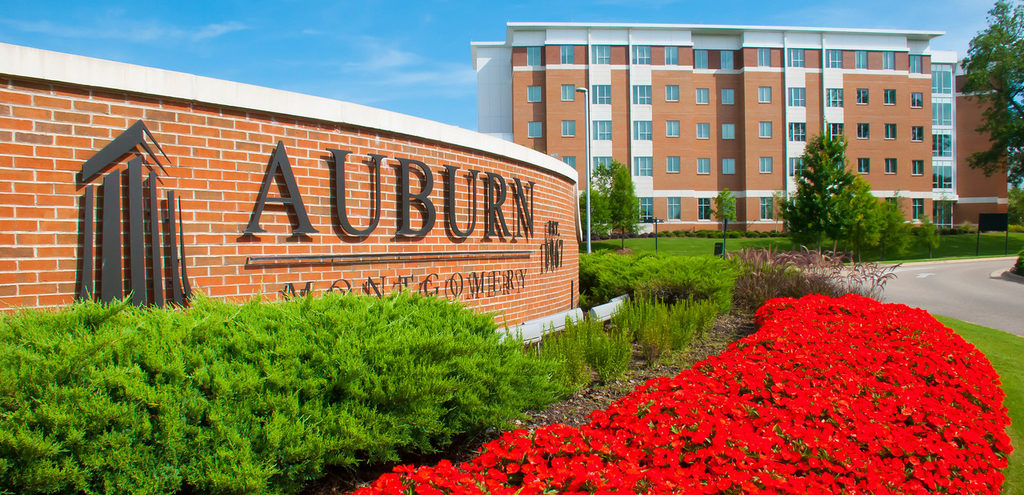
BY: Brittany Vallely
After four years being stationed on campus, the sculptures outside the athletics complex have been scheduled to be removed during winter break, according to the Department of Fine Arts.
William Fenn, Chair and Associate Professor in Photography, spoke with The AUMnibus about the sculptures. He explained that the following three sculptures will be removed: “Old Soldier,” “Change of Heart,” and “The Head Shrinker.”
The sculptures will be returned to the artist that loaned them, Alabama native Charles Lucas.
According to Fenn, the statues were only supposed to only live on campus for a year, and the reason is unknown as to why they stayed longer.
“The artist may have been fine not picking them up at the time, but the university pays for the insurance on them,” says Fenn.
Olivia Tippett, a fine arts major with a concentration in photography, says that she is grateful that the artist allowed AUM to display them for long.
“They stood out to me for their avant-garde style and uniqueness. Art is so diverse and it’s important to represent aspects,” said Tippett.
Fenn also pointed out that most of the sculptures around campus are not student’s work from the past. One of the only works that was created by students is Caroline Booth’s four concrete sculptures, called “4Ever Together,” and is located near the flag pole. The other is the colorful bench outside of Goodwyn Hall, which was created by a student who had already graduated, but came back to AUM to work on the piece.
There are no plans at the moment if AUM is going to replace the Lucas sculptures, but Fenn says he is open to the idea of more student work.
“That’s something I’m sure we will discuss, but just haven’t at this particular point,” he said. “I’m open to anything, but there are no plans because we had this (Lucas’) work much longer than the initial intent.”
AUM mainly finds sculptures through art competitions, such as the online jury platform called Café. People can submit their work and get an honorarium if they are selected. The weight of a sculpture is also taken into consideration in the competition, because there is a limited amount funding when shipping the sculptures.
“I’m not sure if Lucas’s work was a result from that competition—it may have been—but it could have also been because of his connection within the community,” said Fenn.
Lucas is known for his raw art style, and his work has been shown and honored at many institutions such as the Montgomery Museum of Fine Arts, Birmingham Museum of Art, and the New Orleans Museum of Art.
“The idea of raw art certainly comes to mind because this is something that is constructed from other pieces and combined to form this new work of sculpture,” said Fenn
Fenn also believe it is important acknowledge that Lucas’ work is often described as outsider art because the artist does not have any educational training in art, but that is a term that people should start avoiding.
“It is probably a term that we should stop using because it could associate with naïveté, and that could be very offensive to the artist. I think folk art or art brut are better terms to utilize,” he said.
Another sculpture that is near the end of its time at AUM is “Angry Teeth,” by Kurt Dyrhaug, and is located near Clement Hall.
The purpose of the sculptures was to beautify campus, but they were never meant to stay on campus forever. Unfortunately, it is time to return them.
“I think it’s sad to see the sculptures go because they have become such a staple in our courtyard,” said Tippett. “I hope in the future our campus will continue to support artists by funding unique artworks to display on campus.”
